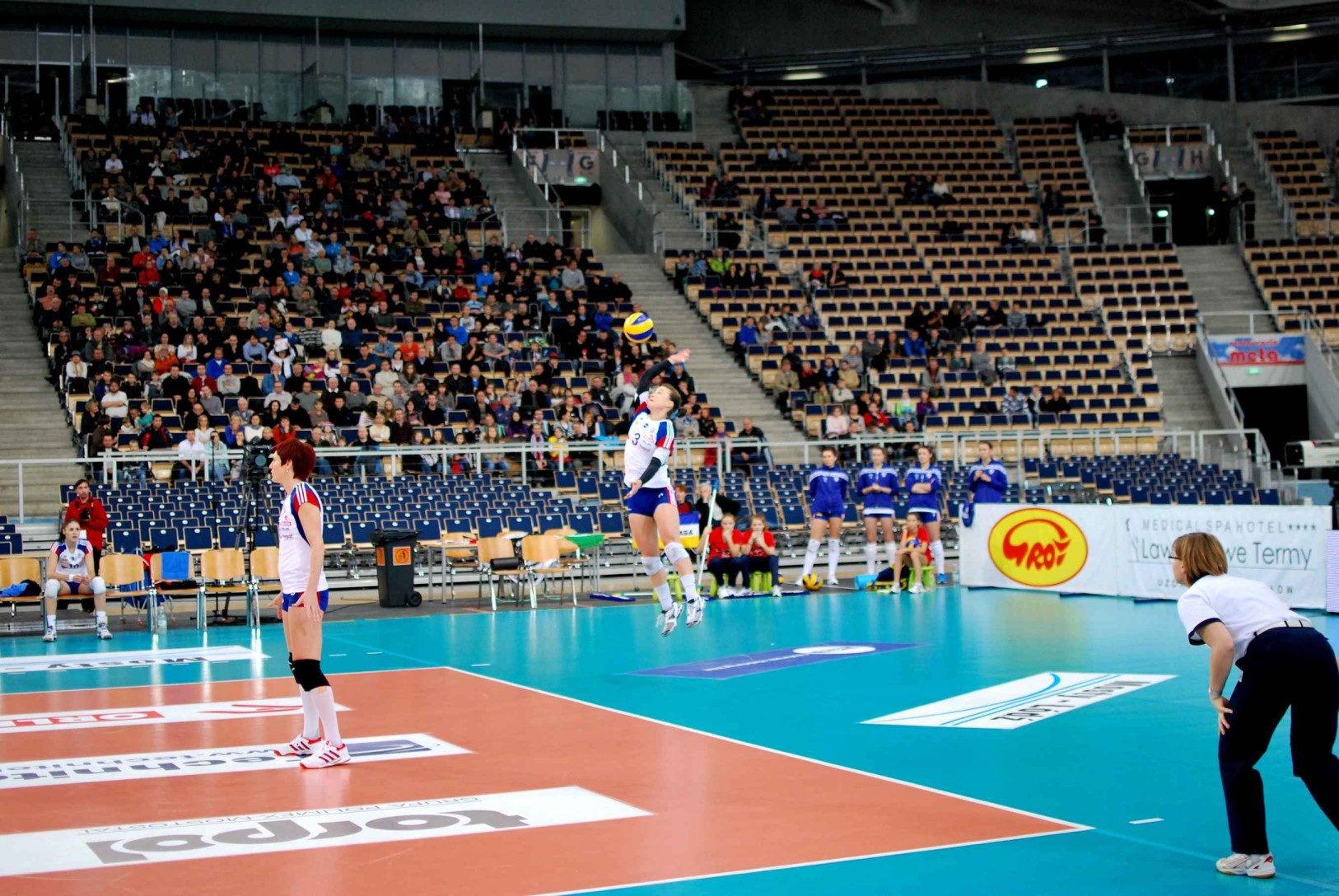How to Prevent Volleyball Injuries

The game of volleyball can give you severe injuries, if you take your safety for granted and you don’t take the necessary precautions to protect yourself physically. But almost all the injuries can be prevented with right strategies.
How to prevent volleyball injuries? By taking proper care of your body, wearing the right sportswear, doing daily exercises based on your playing position, maintaining your weight, warming up before hitting the court and training your body with relevant practice, you can easily prevent volleyball injuries.
Almost 33% of volleyball athletes in America believe that injuries are either very common or somewhat common while playing this sport. This brings us to the need of preventing volleyball injuries.
General Recommendatiosn to Prevent Volleyball Injuries
Volleyball players are prone to different types of injuries based on their playing position. I will get back to the specific injuries later, here are some general exercises for different injury prone body positions that can help any type of volleyball player in preventing injuries.
| Injury prone body parts | Exercises to prevent injuries |
| Knee | Walking lunges, Squats, Hamstring curls bridges |
| Wrist | Straight Bar Bench, Wrist Curls, Dumbbell Hammer Curls, Standing Wrist Roll |
| Ankle | Ankle Alphabet, Single Leg balance, Four-square drills, Resistance band work, Heel-Toe Walks, Ankle Circles |
| Legs | Squats, Knee Tuck Jumps, Stability Ball Hamstring Curl, Calf Raises |
| Arms | Push-Up, Dumbbell Arm Swing, Inverted Rows, Military Press |
If you do all of these exercises, you can easily avoid most of the volleyball injuries. After all, avoiding injury is the foremost priority of most athletes in any game.
Now let’s see how some specific injuries can be avoided.
Most Common Volleyball Injuries and Ways to Prevent Them
Some most common volleyball injuries include:
- Ankle sprain
- Finger sprain
- ACL injury
- Patellofemoral pain syndrome
- Collateral ligament injury
- Jumper’s knee
Ankle sprain
Ankle sprain is one of the most frequent volleyball injuries. Almost all players on a volleyball court are prone to this injury,
Ankle sprain happens when your ankle shifts away from its normal position. This occurs when the ligaments that support the ankle stretch or tear. Once you face this injury, you can face mild to severe discomfort, depending on the extent of the damage.
One of the common reasons for volleyball ankle sprain is the sudden change in your feet position during the game. As you always need to move while playing volleyball, doing proper practice and warming up before the game is recommended to tackle the sudden ankle movements so you can avoid any injury.
Most players report ankle sprain when they land on their feet after the jump. As you can expect to jump frequently in volleyball, ankle sprain can be a common volleyball injury.
But you can prevent volleyball ankle sprains by:
- Wearing proper footwear that provides proper support and cushioning to your ankle.
- Warming up before the game
- Wearing ankle braces or taping
- Practicing proper landing techniques that will reduce your probability of landing
Finger sprain
Finger sprain occurs when the ligaments in your finger are stretched or torn, usually from catching or passing the volleyball.
But finger sprain can easily be prevented if you:
- Stretching your fingers gently to increase their endurance level.
- Wearing buddy straps or supportive wraps will also help you in preventing finger sprain.
Some volleyball competitions might not allow you to wear wraps, so you better know the laws first to avoid any trouble.
ACL Injury
Anterior Cruciate Ligament (ACL) is one of the most important ligaments in the knee. Unfortunately, this ligament is also susceptible to injury, particularly in athletes who play indoor and beach volleyball. Indoor volleyball has a hard surface while beach volleyball offers uneven terrain, which increases the probability of ACL injury.
There are several things you can do to help prevent ACL injuries, including:
Athletes must practice some touchdown techniques that can help them in preventing ACL injuries. Some of the exercise to avoid this injury include:
- Forward and backward lunges
- Block jumps
- 360 jumps
Apart from that, wearing the right type of shoes can also help you in preventing this injury.Chose the volleyball shoes that provide good cushioning and you are good to go to prevent ACL injury.
Collateral ligament injury
This type of injury can occur when the knee is extended beyond its normal range of motion, causing the ligament to stretch or tear. It can mostly happen when a volleyball player lands awkwardly after jumping thus putting unnecessary pressure on their knee.
Collateral ligament injuries can be very painful and may require surgery to repair the damage.
But just like other injuries, collateral ligament injury can also be prevented by:
- Making your knees flexible by warming them up before hitting the nets.
- Wearing knee pads during the game to keep your knees in place during landings.
- Strengthen you quadricep muscles
- Make your hamstring strong, which eventually helps you in protecting your knees.
- Improve your running and jumping posture.
Jumper’s knee
Jumper’s knee, also known as patellar tendonitis, is another common volleyball injury. This condition occurs when the tendon that connects the kneecap to the shinbone becomes inflamed or irritated. Jumper’s knee is often caused by overuse, repetitive stress on the tendon, or sudden impact.
Too much jumping in the wrong position is a common cause of a jumper’s knee injury during a volleyball game. But this injury can be prevented by:
- Doing knee exercises (knee bends, thigh contractions, straight leg raises, hamstring stretching, normal squats, and single leg squat)
- Wearing knee pads during the game also helps in preventing jumper’s knees.
Every volleyball player is recommended to take part in exercises based on their playing position.
Patellofemoral Pain Syndrome
Patellofemoral pain syndrome (PFPS) is a common knee condition that causes pain around the kneecap (patella). It is also known as the runner’s knee or anterior knee pain syndrome.
PFPS typically develops due to overuse, injury, or misalignment of the kneecap, which can cause irritation and inflammation in the tissues surrounding the patella. This can cause dull, aching pain in the front of the knee, especially when bending or straightening the leg and even when walking.
You are most vulnerable to PFPS when your knees are at risk of repetitive bending. So the best way to prevent this injury is to increase the resistance level of your knees. This you can do by:
- Warming up before the game
- Stretching regularly
- Doing regular knee exercises.
The Bottom Line
As a volleyball player, you should always try to prevent injuries first. However, injuries can happen to anyone since our bodies have physical limits. In case you get any injury, or you feel pain in any of your body parts, consulting a doctor should always be your first move. Playing with an injured body part is never a safe option, as it can give you lifelong injury.
This is the very reason why most professional volleyball players have their personal physio who assists them in getting rid of any injury. But volleyball hobbyists who don’t have enough resources to afford a physio can always consult doctors in case of any injury.

Ahmed is the founder of Ball and Net Sports, a platform where he writes about volleyball.
As a professional volleyball player who has participated in various national and international level volleyball competitions, he loves to teach other volleyball enthusiasts about the game.
He is now a professional volleyball coach who organizes volleyball camps and social events for talent hunting for top volleyball teams.
As a volleyball talent-hunting specialist, he loves to teach people how they can make their game better in the fast-paced volleyball environment where it is extremely difficult to get quality content free of cost.



